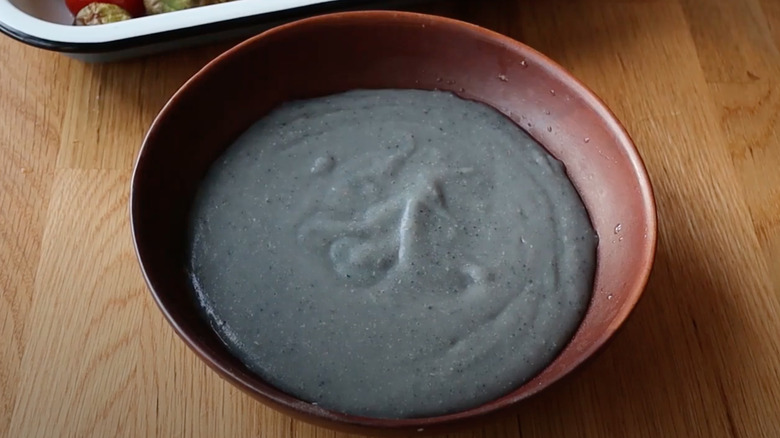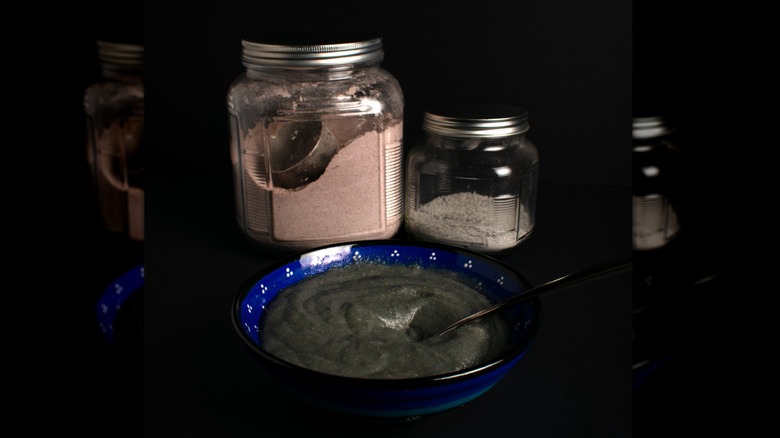Blue Corn Mush Is The 3-Ingredient Navajo Treat You Should Try
Creamy, nourishing, and naturally sweet, blue corn mush is comfort in a bowl. This simple porridge is often eaten for breakfast in Navajo and other indigenous kitchens. It uses nothing more than blue cornmeal, water, and juniper ash, which adds a slightly smoky, earthy flavor and enhances the blue color. Often, blue corn mush is served sweet with a simple sugar topping, but like other similar porridges such as grits, cream of wheat, or oatmeal, it can also be made savory with additions like butter and salt.
The exact ratios will vary depending on the kind of consistency you want. A thick and spoonable blue corn mush will use about one part cornmeal to three parts water, while atole — a sippable version common across the Southwestern United States, Mexico, and Central America — may use four to six cups of liquid per each cup of cornmeal.
The key here is to first boil the water with the juniper ash and then separately, combine the cornmeal with more water to create a slurry. Then, slowly add the blue corn mixture into gently boiling water, stirring constantly so that it does not clump up. It will thicken up beautifully as it cooks. This is a great breakfast to serve any day of the week, but it is particularly special as a way to celebrate Indigenous Peoples Day. Top it off with fruits and nuts that are native to the area where you live!
Blue corn mush is a nutritional powerhouse
Corn is a fruit packed with calcium, niacin, and vitamin B3, but the problem is that those vitamins and minerals are not very bioavailable to humans. Grinding corn into a powder or cooking it helps make it more easily digestible, but the key to unlocking all that goodness is the addition of juniper ash.
The ash is made from burning down the branches of the juniper tree, which creates an alkaline material. When introduced to the cornmeal, it begins the process of nixtamalization, softening the cellular walls of the corn and releasing those nutrients. Juniper ash is also incredibly rich in calcium, with one gram having about the same amount as a cup of milk. People native to the Americas discovered this innovative method for attaining necessary nutrients because dairy was not a part of the indigenous diet.
Additionally, the blue varieties of corn are rich in antioxidants called anthocyanins, which are also abundant in mulberries, purple tomatoes, black chokeberries, black currants, blackberries, and purple cabbage. Anthocyanins may play a role in preventing heart diseases, type 2 diabetes, and certain cancers. This particular combination of ingredients in blue corn mush is not only delicious, but also perfectly reflects the wealth of indigenous knowledge around nutrition, science, and chemistry.


